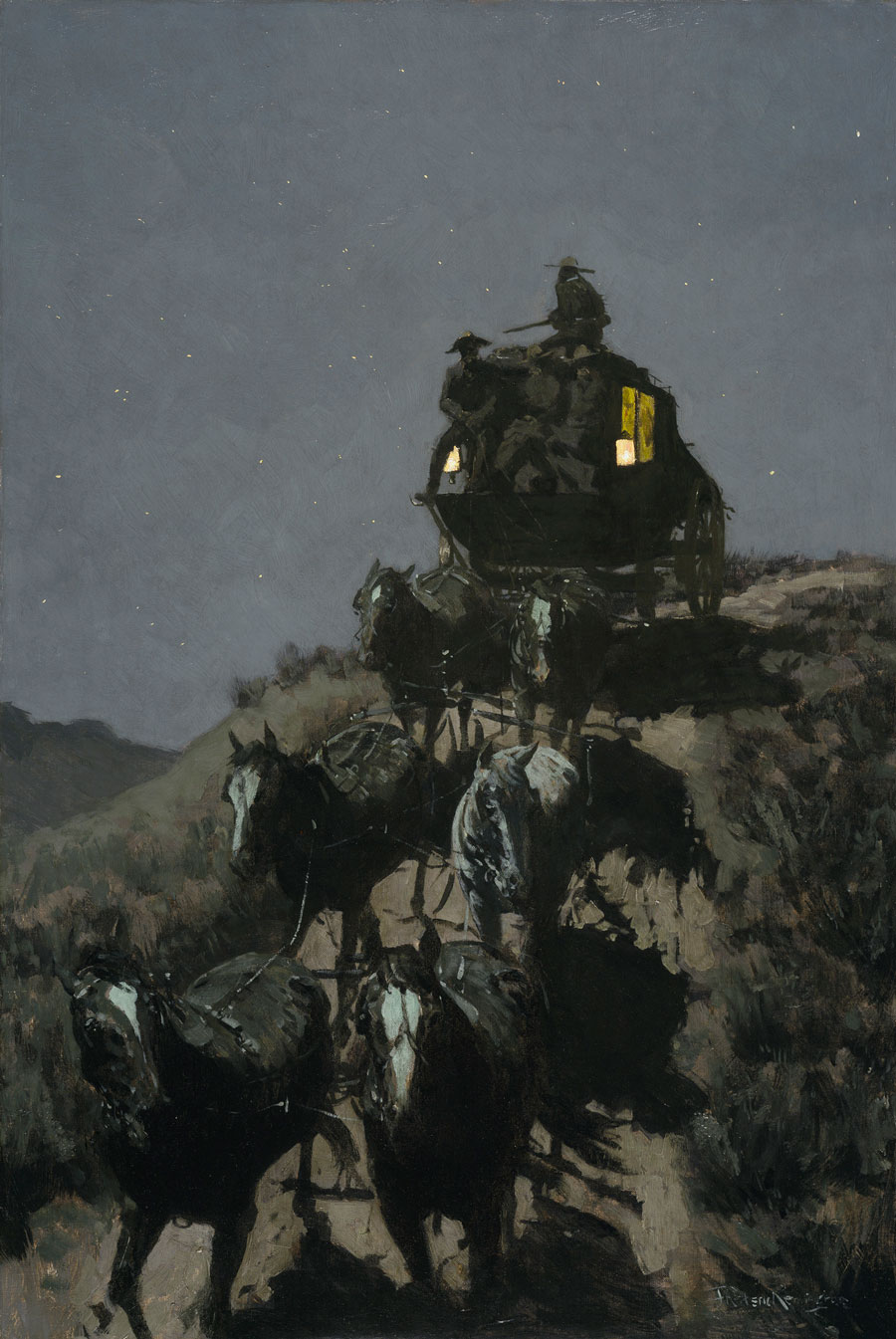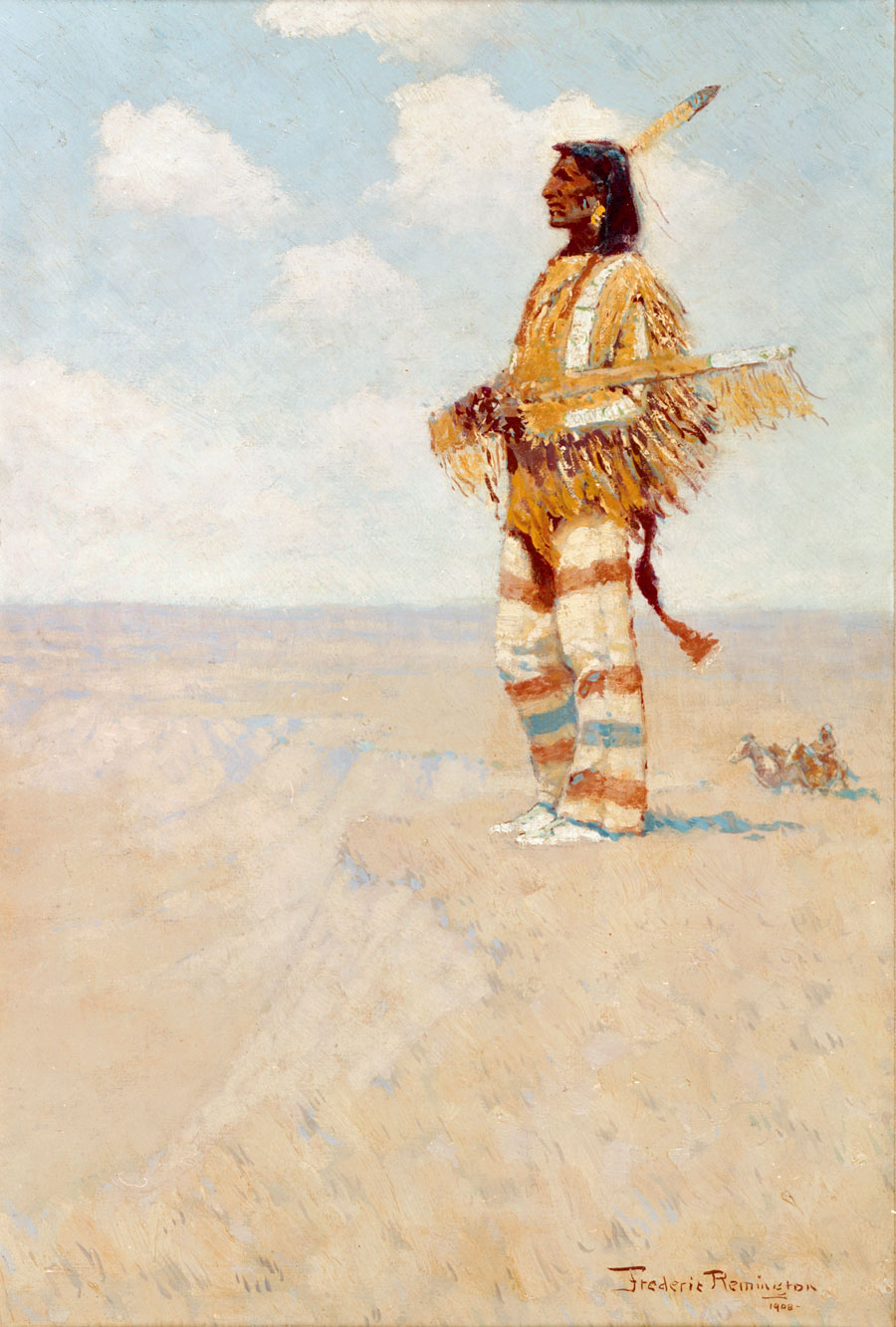The Western: An Epic in Art and Film features a stunning collection of works by some of the most well-known western artists including Albert Bierstadt, Thomas Moran, and Charles Marion Russell. Western art fans will be thrilled to hear there are eight artworks by Frederic Remington on view in this exhibition at the Denver Art Museum through September 10. Learn more below:

Frederic Remington, American, 1861–1909, The Old Stage-Coach of the Plains, 1901. Oil paint on canvas. Amon Carter Museum of American Art, Fort Worth, Texas: Amon G. Carter Collection
Frederic Remington is one of the rare talents who first excelled as an illustrator and later developed into an acclaimed painter and equally a sculptor. Perhaps most impressive of all was Remington’s incredible—even revolutionary—ability to depict high-spirited action for dramatic effect in both two- and three-dimensional media. Remington’s ambitious painting A Dash for the Timber (pictured at top) was first exhibited at the National Academy of Design in 1889. The New York Herald described the work, in part, as “a small band of mounted frontiersmen . . .dashing toward the spectator . . . The figures of men and horses are in fine action, tearing along at full gallop.” It was the harnessing of action beyond anything else that grabbed audiences’ attention, as he showed horses coming directly at the viewer in mid-stride, their hooves not touching the ground.

Frederic Remington
American, 1861–1909
The Broncho Buster
Modeled 1895, cast 1906
Bronze
Denver Art Museum, The Roath Collection, 2013.92
The Broncho Buster was Remington’s first attempt in the medium of bronze sculpture. Before it, all horse-and-rider sculptures were essentially still, with maybe a raised leg to imply movement; never before had an artist tried to render the subject in full movement.

Frederic Remington, American, 1861–1909, The Last of His Race (The Vanishing American), 1908. Oil paint on composition board. Yale University Art Gallery, New Haven: Gift of Mr. and Mrs. A. Varick Stout, B.A.
Among the most common representations of American Indians in the early twentieth century was as a “vanishing race” that ultimately would be overtaken by a more dominant culture. Sentimental depictions by Euro-American artists show defeated indigenous men alone, retreating, or otherwise resigned to their fate as a people doomed to extinction. However, such imagery ignores empowering stories of Native Americans who persevered despite significant obstacles.
Learn more about how western American art was used to help shape the myth of the Old West in The Western: An Epic in Art and Film. Get tickets.
Credit for top image: Frederic Remington, A Dash for the Timber, 1889. Oil on canvas. Amon Carter Museum of American Art, Fort Worth, Texas, Amon G. Carter Collection.

